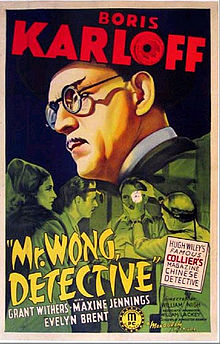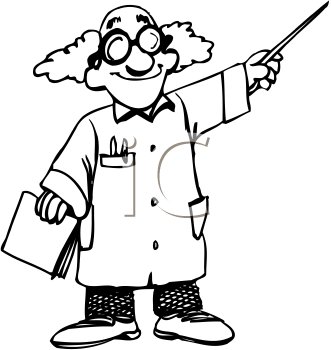 |
| Typical Datura blossom |
They believe what they are told, said Miss Marple. “Yes indeed, we’re all inclined to do that,” she added. Then she said sharply “Who told you these stories about India, about the doping of husbands with datura . . . .?”
Agatha Christie
A Caribbean Mystery
In a
previous article I listed a number of books that were inspired by trips to the Caribbean. When I finished the article I realized that there was only one book on the list that I had not, in fact, read. I remedied that by downloading Agatha Christie’s
A Caribbean Mystery onto my Nook and read it while we were “down island.” Half way through the book Miss Marple muses on a strange flowering plant – the
datura. The reference struck a personal chord.
 |
| Areas where daturas are likely to be found |
I suspect that few readers know much about the
datura. The plant grows profusely in warm climates and, while indigenous to Latin America (on this continent) can be found in many aereas of the world. The datura puts forth beautiful lily-like flowers, wonderfully fragrant, that blossom and then whither, each over the course of an evening and the following morning. Sometimes, particularly in mid-summer, one datura plant can produce 20 to 30 of these one-day wonders. At sundown you can watch the bees buzzing around the sealed flower buds, waiting for each flower to burst open. A beautiful plant. But, as Miss Marple alludes, there is a dark side to the Datura. More about that in a little while.
Why was I surprised to encounter Agatha Christie’s reference to the plant,? Well, as rare as the datura plant is, it is hardly so on our block in Chevy Chase, in the District of Columbia. Like many of our neighbors we have several datura bushes growing in our back yard, where they have been ensconced for the past thirty years. It was surprising to find Miss Marple referencing this strange plant since my wife Pat and I, along with many of our neighbors, were, in fact, introduced to the datura by a lady not completely unlike Miss Marple.
Shortly after we first moved into our home in Washington, D.C. back in 1982 there was a knock at our front door. When I opened the door I was face to face with a ramrod straight 80 year old woman attired in a cotton dress and a huge straw hat, tied at the chin. Our visitor announced (seemingly in one breath) that she was Mary Marsh, that she lived just across the street and that she had lived there since 1942. "Back then," she said, "the street was not even paved." Nodding her head once in punctuation she then marched through the door before I could even utter a word of invitation. Mary walked purposely into our living room, seated herself on the couch, and explained that as the oldest neighbor on the block she wanted personally to welcome us to the street. My wife Pat and I watched in awe as Mary prattled on non-stop about the history of our new block.
The next day Mary appeared again at our door, this time with a small white envelope. “I thought you might like these,” she said, thrusting the envelope into my hand. “These are datura seeds. I could see your back yard through the kitchen window yesterday, and I thought that a row of daturas would look lovely along your rear fence.”
Pat is more the gardener, but even she was perplexed. “What are daturas?” she asked. “Lovely white flowers, bloom only for a day,” Mary responded. “You have to pinch the flower off then, you know, in order to be sure that the plant continues to produce and doesn't start going to seed. Bert and I,” she said, referencing her 84 year old husband who at the time we had yet to meet, “brought them back from Mexico years ago.” Mary thought a minute and then added “you know, I have a book about daturas that I should lend to you.” And at this she turned on her heel and trotted back across the street only to return several minutes later with what was probably the most dog-eared and heavily read book I have ever seen. She handed the book to Pat and then left.
We closed the door, looked at each other and then down at the book. The well-worn volume our octogenarian neighbor had pressed into Pat's hands was titled
Narcotic Plants of South America. Well, beyond that ominous title the book also confirmed the beauty of the datura's flowers. That afternoon, like Jack and the beanstalk, we planted the seeds.
So, we had a colorful introduction to Miss Marple’s (and Mary Marsh’s) most unusual plant. As Mary had assured us, the datura, more technically the Datura Stramonium, without question, produces a lovely and fragrant flower. Each blossom is lilly-like. The flowers open, like clockwork, just as the sun sets, and they last only until the next morning. And as each flower opens it sends forth a beautiful fragrance, that often, in the height of summer, will flavor the air of our entire back yard.
I never found another copy of that book Mary loaned to us, but in one of the few horticulture books on daturas that is easily accessible,
Brugmansia and Datura: Angel's Trumpets and Thorn Apples, Ulrike Preissel, writes
Datura, sometimes called Thorn Apples, are mostly annuals and are cultivated like summer flowers. The impressive bell flowers of both varieties -- in white, yellow, pink and red -- are extraordinarily decorative. It's no surprise that Brugmansia and Datura are prized by enthusiasts around the world.
But enough of this.
Mr. Preissel also notes that cultivation of daturas is unlawful in some places in the world. (I understand this to be the case in Oklahoma, for example.) Why? Well, as Miss Marple observed, and as the title of that book Mary Marsh first loaned to us back in 1982 implies, daturas are not known solely for those lovely, lily-like aromatic flowers. We can get an inkling of this from the name itself: reportedly in Latin one meaning of the word "datura" is "send to die."
The datura is, in fact, one of the most dangerous poisonous and hallucinogenic plants in the world. Enno Freye in
Toxicity of Datura Stramonium has written:
No other substance has received as many “Train Wreck” severely negative experience reports as has Datura. The overwhelming majority of those who describe the use of Datura (and to a lesser extent Belladonna, Brugmansia and Brfunfelsia) find the experiences extremely mentally and physically unpleasant and not infrequently physically dangerous.
 |
| Datura seed pods | | |
|
|
This beautiful flowering plant has historically been linked to numerous murders and suicides, particularly in India and in Europe, where it also grows in warm climes. A 2002 study entitled
Brugmansia and Datura: Angel’s Trumpets and Thorn Apples by Ulrike and Hans-George Preissel (yep, co-authored by the same gentleman who, in the earlier quote, was extolling the datura’s beauty) reports that the between 1950 and 1965 the State Chemical Laboratories in Agra, India investigated 2,778 deaths that were caused by ingestion of the datura plant.
 |
| Datura seeds |
Most poisoning incidents involving daturas stem from the ingestion of the plant’s large potato-like root. But it is not just the root that causes trouble. The datura’s seeds, which diffuse from the plant in the wind after the first frost, are also highly toxic, and reportedly swallowing as few as a half teaspoon of the datura’s seeds will cause delirium and, in severe cases, death by cardiac arrest.
Closer to home (indeed, only a few miles from mine) the United States Center for Disease Control reports that in 2008 a family of six in Maryland were inadvertently poisoned when they ate cooked datura root and leaves that they unknowingly added to a stew they had assembled using only “natural” ingredients found in the woods behind their home. (Ahh, nature!) While, thankfully, all six survived the ordeal, the Center, even in its characteristic dryly medical style, reports a harrowing experience:
The six affected persons came from one family and included three men and three women ranging in age from 38 to 80 years (median age: 42 years). All six shared a meal of homemade stew and bread at approximately 9:00 p.m. on July 8, 2008. No one else was at the home when the meal was eaten. Approximately 1 hour later, another relative arrived at the home and discovered the six affected family members laughing, confused, and complaining of hallucinations, dizziness, and thirst. One of the family members vomited. The unaffected relative called emergency medical services, and all six were transported to the hospital by ambulance.
On admission to the emergency department, two of the six patients were unconscious. The other four were awake and had altered mental status; . . . . During the next 6 hours in the emergency department, the six patients continued to experience tachycardia [i.e. accelerated heart beats], mydriasis [i.e. severe dilation of the pupils], and altered mental status. One remained unconscious. The others demonstrated confusion, aggression, agitation, disorganized speech, incoherence, and hallucinations. All six were admitted to the hospital, five to the intensive-care unit.
According to the Center, such effects are apparently not at all unusual in cases where datura, and principally its root, is eaten. Typically ingestion of the plant produces delirium, a complete inability to differentiate reality from fantasy, violent behavior and prolonged amnesia. Without immediate treatment ingesting the root can prove fatal, particularly to children.

You would think that such a plant would be very popular in the types of stories that spring from the computers of authors such as those who contribute to this blog. But aside from Agatha Christie’s
A Caribbean Mystery, I personally know of only one other book in which the datura plays an explicit role –
The Clan of the Cave Bear by Jean M. Auel. There the roots of the plant are ingested by the clan’s shamans to induce a hallucinatory religious experience. The datura also reportedly inspired the strangling plant that was a key element in the plot of the first Harry Potter book,
Harry Potter and the Philospher’s Stone (or
Sorcerer's Stone depending on where you live). Following publication of the book there was a spate of somewhat hysterical
reports from folks in the English countryside who found that their gardens in fact contained the plant that had inspired the one used against Harry.
While the datura is not a common mystery device, it has made its presence known throughout history. The chapter on daturas that is available on-line at the
Poison Garden Website reports the following:
In 38 A.D. Antony led another attempt by the Romans to subdue the Parthians and, as with previous expeditions, met with no success. Starving on the way back, his soldiers were reduced to living off the land and some of them ate Datura. As a result they are reported to have done nothing but ‘turn over every stone in his path with the greatest gravity, as though it were a difficult task.’ It is sometimes said that this incident leads to the saying 'leaving no stone unturned' to mean taking great care over a task.
My favorite historical reference to daturas, however, that is quoted at the Poison Garden website, is from colonial times:
In Jamestown in 1679, soldiers ate leaves in a salad and experienced ‘a very pleasant comedy’. In the “History and Present State of Virginia” (1705), Robert Beverly gives an account of what happened. “Some of them eat plentifully of it, the Effect of which was a very pleasant Comedy ; for they turn’d natural Fools upon it for several Days: One would blow up a Feather in the Air; another would dart Straws at it with much Fury; another, stark naked, was sitting in a Corner, like a Monkey, grinning and making mows at them; a Fourth would fondly kiss and paw his Companions and snear in their Faces with a Countenance more antick than any Dutch Droll. . . . A thousand such simple Tricks they play’d, and after Eleven Days, return’d to themselves again, not remembering anything that had pass’d.” This incident gives [to daturas] the [local] name jimsonweed (Jamestown Weed).

Or consider, if you will, the strange case (sounding like Rod Serling, here) of Clairvius Narcisse, probably the most well-documented Haitian "zombie." Narcisse "died" in 1962, lay in a refrigerated morgue for three days and then was buried. Yet he turned up 18 years later, identifying himself to his sister on the streets of Port-au-Prince. Narcisse claimed that after being buried alive he was dug up and then subjected to mind control that allowed him to be kept in forced labor all of those years. According to Wade Davis' 1985 book
The Serpent and the Rainbow, and a report at the
Skeptoid website, this was accomplished by force feeding him "a paste made of sweet potatoes, cane syrup, and a plant called
Datura" The website notes that datura, popularly referred to as "the Devil's cucumber" in Haiti, along with nightshade and henbane, has long been used there as a hallucinogenic drug.
All that having been said, thanks to Mary Marsh -- who, notwithstanding her life-long proximity to these poisonous plants lived to be almost 100 -- our neighborhood is populated by many daturas, all relatives of the seeds Mary brought back from Mexico decades ago. On our block daturas are cultivated only for the beauty of their flowers. No mystery stories here,. Certainly no zombies.
Our daturas plants do seem to have a mind of their own. They started out near our back fence in 1983, died out there but then re-appeared for several years at a side fence, only to desert that location for their present home under a black locust tree at the rear of our yard. There they die off every fall only to re-appear, like clockwork, in the first warm days of June. By August they can be six feet tall.
Throughout the summer we appreciate the beautiful flowers, and the aromatic fragrance each evening as the blossoms open. Miss Marple, and our late neighbor Mary Marsh, knew both sides of the plant. But for us it is all about the flowers.



































 In contrast, the Lugosi flick was surprising awful. Bela himself seems resigned to struggling through the movie trying not to tatter his reputation.
In contrast, the Lugosi flick was surprising awful. Bela himself seems resigned to struggling through the movie trying not to tatter his reputation.






